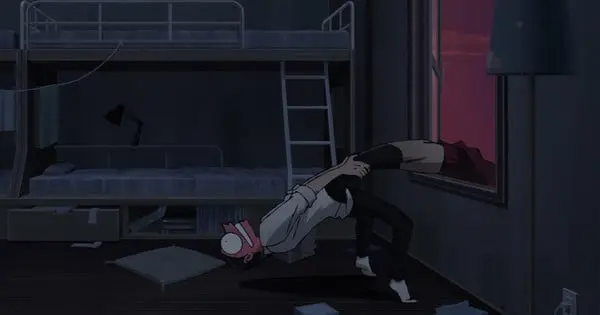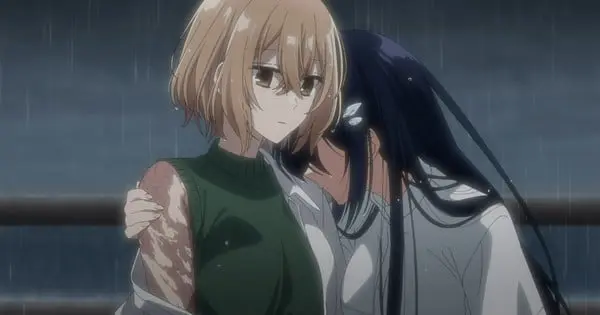In the dystopian near-future of SANDA, where Japan grapples with a rapidly declining birth rate and treats its youth as precious, the narrative delves deeper into its complex themes and character dynamics with Episode 7 of the anime adaptation. The series, adapted from Paru Itagaki’s manga, follows Kazushige Sanda, a descendant of Santa Claus, as he navigates his dual identity and a society that has forgotten the magic of Christmas, all while searching for his missing friend, Ichie Ono. Episode 7 serves as a crucial setup, building the world further and intensifying the personal stakes for its young protagonists.
The Precarious Balance of Friendship: Sanda and Amaya
The episode opens by exploring the strained dynamics within Sanda’s burgeoning circle of friends, particularly his relationship with Amaya. Recognizing the growing suspicion of Principal Oshibu regarding Sanda’s connection to Santa Claus, Amaya pragmatically suggests a “friend breakup.” His intention is to protect Sanda by ensuring that Sanda’s secret identity remains undiscovered, as Sanda is the only one not yet linked to the mythical figure’s appearances.
This proposition, while born out of concern, creates a moment of emotional tension. Sanda, however, rejects the idea, ultimately leading to a reaffirmation of their friendship. This interaction, though brief, highlights the inherent risks and sacrifices demanded by their extraordinary circumstances, underscoring the theme of self-sacrifice as a component of adulthood that resonates throughout the episode.
A Glimpse into the Macabre: Class 10
A significant portion of Episode 7 focuses on a chilling excursion undertaken by Sanda and Nico. They visit “Class 10,” a specialized classroom designated for students who have reportedly “killed adults.” This revelation instantly paints a darker, more unsettling picture of the dystopian society. The children in this class are portrayed as disturbingly calm and collected, their innocence juxtaposed with their past actions.
The classroom itself offers more world-building details, such as the heavy boots all students are forced to wear, which are tellingly compared to “prison shackles.” This detail reinforces the notion that the adults in power prefer children to be docile and complicit in their own oppression, viewing them as prisoners rather than protected treasures.
The Unsettling Request for Santa
The true horror of Class 10 unfolds when Sanda, in his Santa form, faces a request from one of the students. Obsessed with Santa Claus, the children ask him to cut off his own thumbs to be used as toys. This grotesque demand presents a profound moral dilemma for Santa, who, by his very nature, is compelled to fulfill the wishes of children. Sanda’s struggle to reconcile his inherent desire to grant wishes with this deeply disturbing request amplifies the episode’s exploration of self-sacrifice and the morally ambiguous nature of the world he inhabits.
Underlying Themes and Future Implications
Episode 7, despite being largely a transitional and setup installment, effectively deepens the thematic complexities of SANDA. It continues to build upon the oppressive atmosphere of a society that, in its effort to “protect” children, inadvertently creates a perverse and dangerous environment. The interactions within Class 10 not only highlight the warped psychology of the youth shaped by this dystopia but also foreshadow potential conflicts that might carry through the remainder of the season.
The episode also subtly hints at the mysterious condition of Ichie Ono, Fuyumura’s missing friend, noting her “weird ass legs and arms” without further elaboration. This unresolved detail adds another layer of intrigue, promising further revelations as Sanda’s quest progresses.
In essence, SANDA Episode 7, while not featuring major climactic battles, excels in its character development and world-building, leaving viewers with a sense of unease and anticipation for the difficult choices and dark truths that Sanda and his friends will undoubtedly face.









